The next day Andy was feeling too tired to come out for the day, so he decided to hang around the condo and rest. Lizy, Elizabeth and I decided to check out the San Angel district for the day.
Frida’s Less Popular House
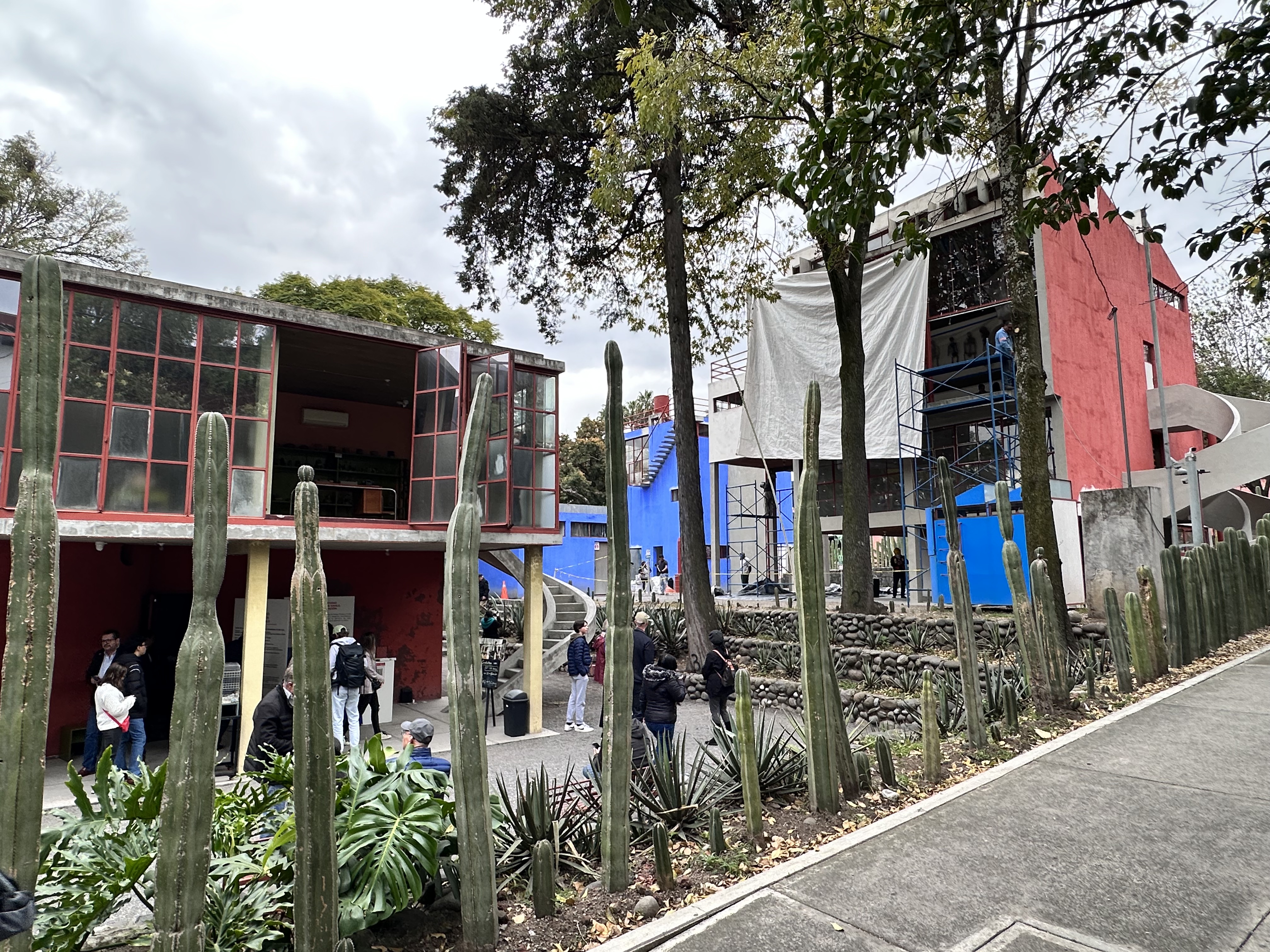
Our first stop was a pair of houses that Frida Kahlo and Diego Riviera lived when they first got married. We got a parking spot right in front of the museum. The gate guy helped me parallel park. When I was backing up, he started smacking on the back of the car. I thought he was indicating for me stop, but when I did so he started yelling in Spanish. Turns out he was smacking on the car to indicate to me to keep going. Like someone yelling, “You have another foot.” It was so counter intuitive from my cultural experience that I started laughing, but I quickly had to get it together because I didn’t want to offend the man after he had helped me squeeze into such a tight spot. I certainly wasn’t laughing at him. It was just a difference in the ways our cultures indicated another foot. I was reminded of Herodotus writing about how every culture thinks that their way of burying their dead was the best way and every other culture buried their dead like barbarians. Culture is king.
The site consisted of three buildings: Diego Riviera’s house, Frieda Kahlo’s house, and a photography lab. Diego’s house and the lab were closed for renovations, so we could only go in Frieda’s house, which was the smallest building. Lizy said, “I guess that’s how to have a happy marriage … separate houses.”
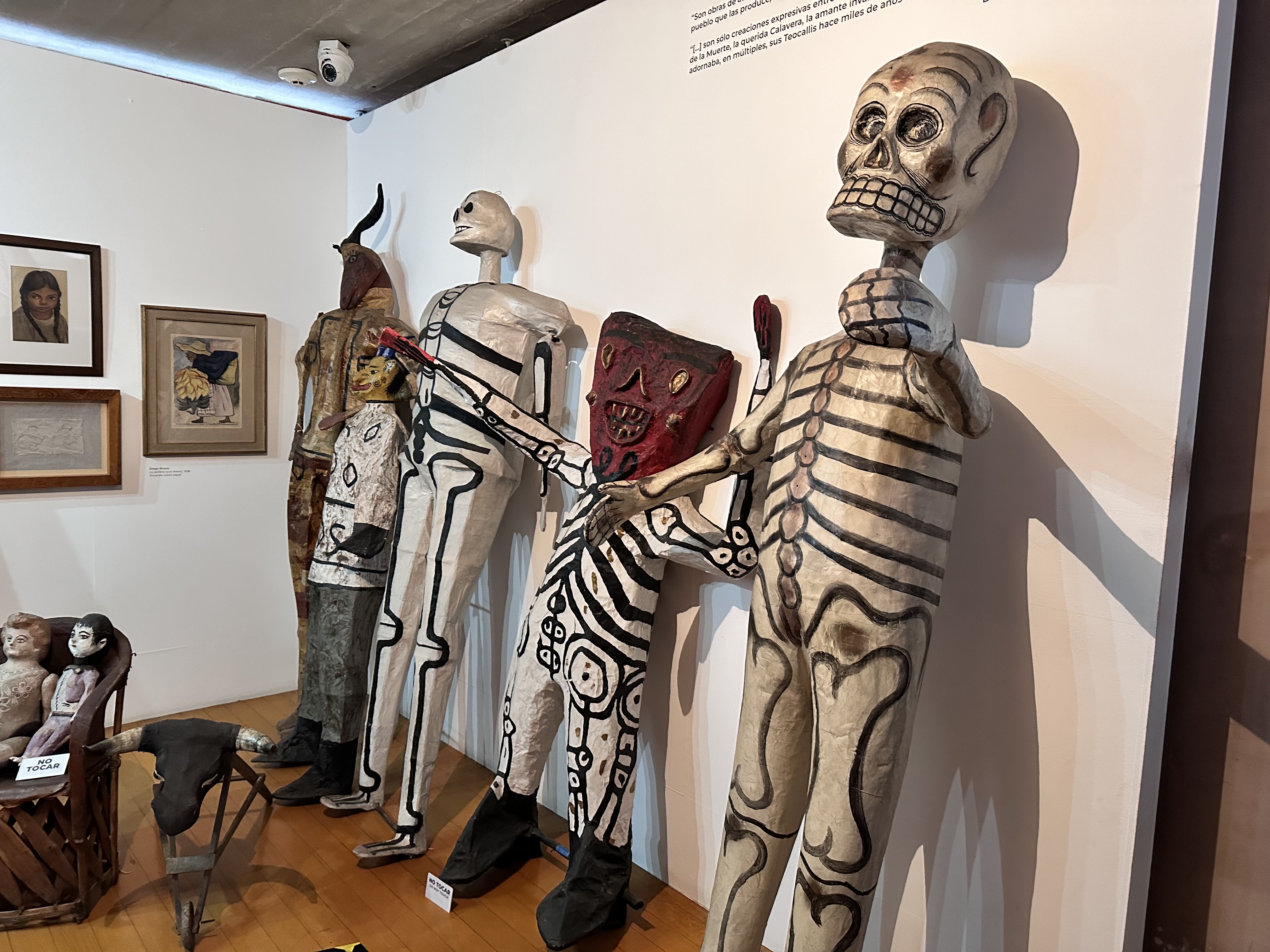
The houses were made of concrete and were kind of wacky looking. They had stairs on the outside like a fun-house. In Frieda’s house most of the upstairs was a studio with a window pane that stretched across an entire wall of the room and could be entirely opened.
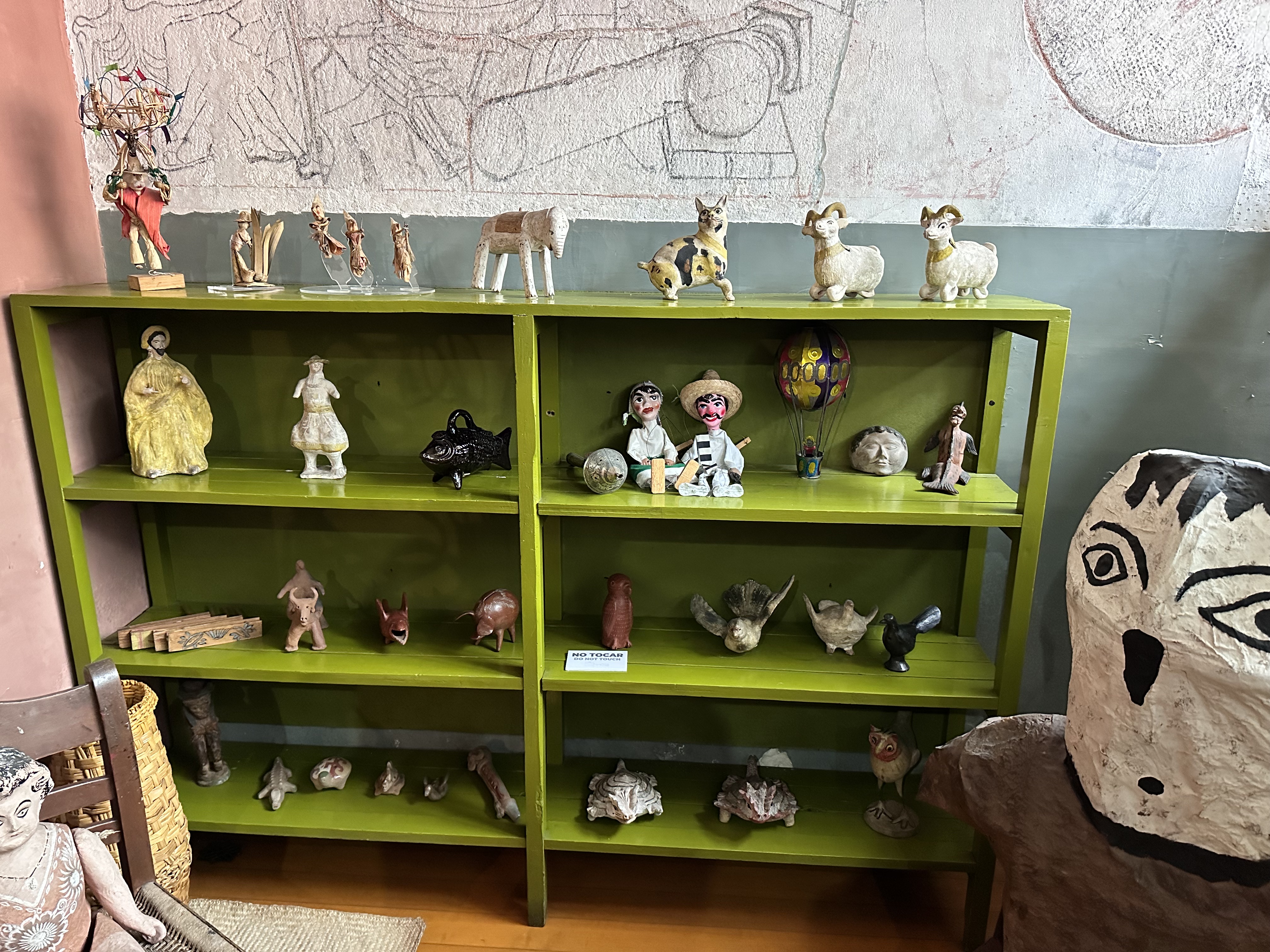
Her house was filled with some old paints, native mexican statues, Diego’s sketches, and pinata looking pieces. I think they could’ve cleaned up the old cans of paint, but I guess they created an ambience.
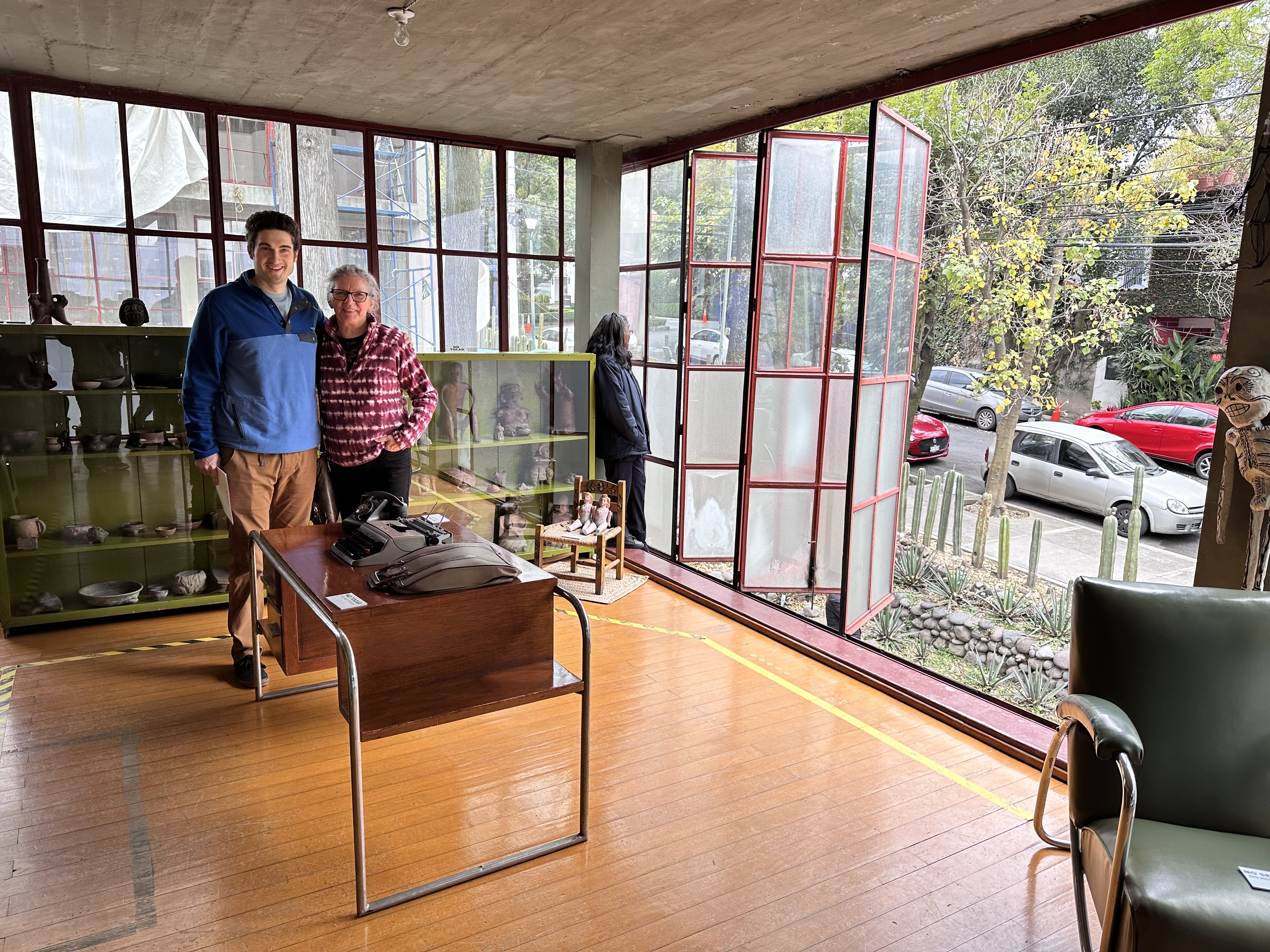
First Tamale
I finally found a street vendor selling a tamale on the walk to the Gill museum. They had red tamales and green tamales. I couldn’t figure out what either of them contained. I tired to get Lizy to figure it out, but after a while I just gave up and got the red ones. They weren’t stuffed with anything, but they were lightly sweetened with maybe strawberry, but I’m not entirely sure. It was a delicious breakfast.
Gil Museum
The Gil museum was in a beautiful, modern building. It housed contemporary artwork. Lizy pointed to the walls, “See white.” And she continued, “The curator has more opinionated theming and writing as well.” There were short blurbs on the white walls surrounding the exhibits that gave thematic quotes. The first level of the museum was devoted art themed around the horrors of colonization and how tragedy repeats itself. There were paintings in a comic book style where hispanics were depicted as distinct from native Mexicans either as by being depicted as tourists or as evil villains. There was also some more literal depictions of the horrors of colonization. One painting depicted two natives being tortured by a group of conquistadors. In the painted the pair of natives were strapped to a bed, while their feet were being burned by a lit fire on the ground. A dog wailed for them.
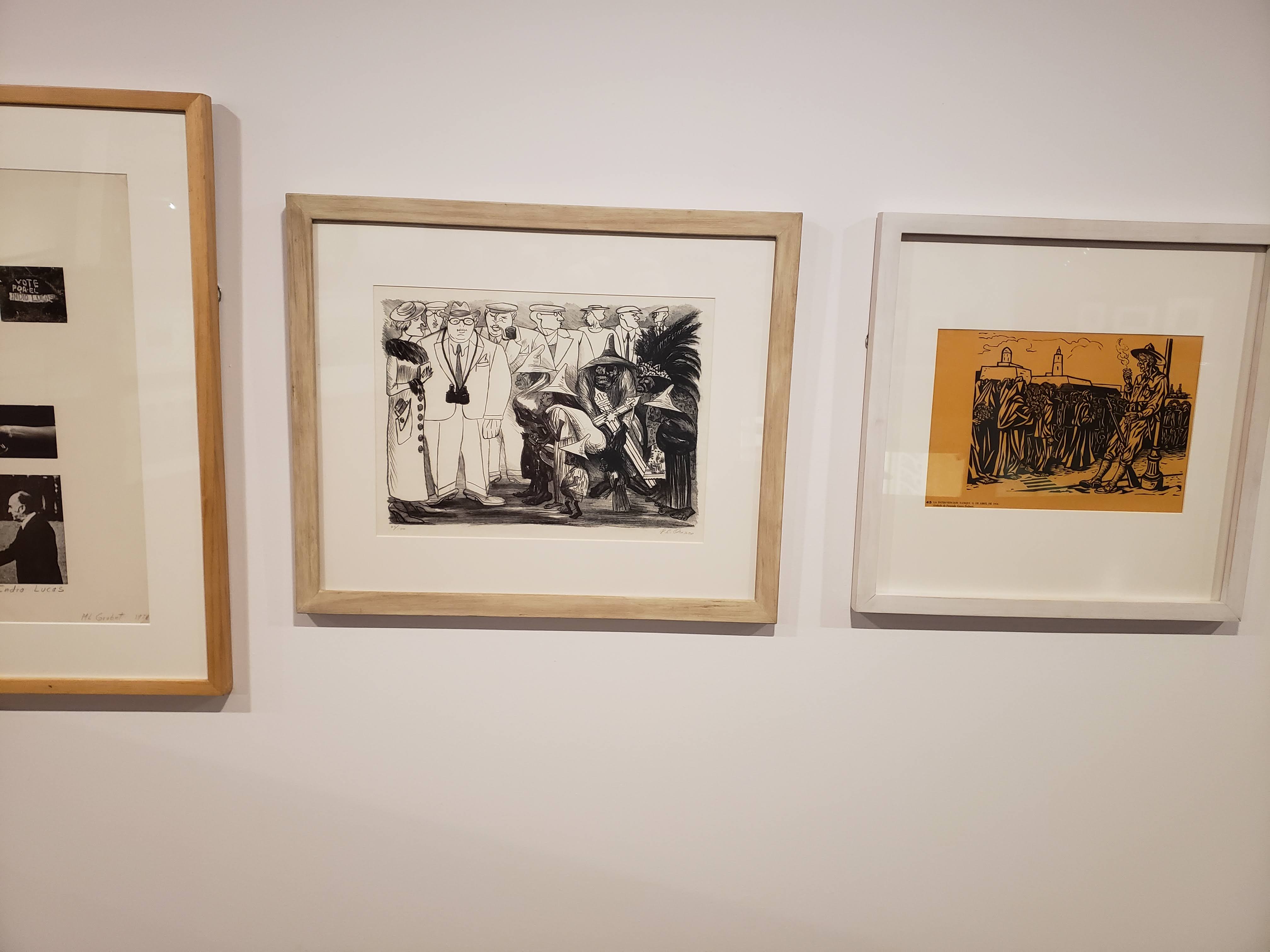
Of the blurbs I only remember two because in both I was surprised to see reference to ancient Greece. The first blurb made a comparison to how colonization is depicted in artwork to how tragedy was depicted in Ancient Greek theatre. In both cases the blurb claims that the tragedy has to be retold because the original trauma cannot be fully processed. I think the comparison referred to how a lot of action in greek theatre happens offstage, such as in Oedipus Rex when Oedipus gouges out his eyes, and the audience experiences the event through the character retelling what just happened. I thought the connection was a little tenuous. It seems like a natural thing for art to depict tragedy and I don’t think Picasso needed to look back to the Greeks to paint Guernica. I leave it up to the reader to decide.
The next blurb compared the artwork to the philosophy of Heraclitus. I thought with all the talk of Ancient Greece the curator must have some affinity for the period. Maybe they were a classicist turned curator. Or maybe the curator was making a meta point. By talking about colonization using the ideas of Ancient Greece, the horror of colonization, which is really the horror of the native Mexicans, is being analyzed in the language of the oppressor. It’s being analyzed in the origin of the philosophy of the culture that conquers Mexico. The ideological conquest is complete once the introspection of the wrongness of the conquest is done in the language of the new ideology.
In the back corner of the floor there was a new agey type of movie playing in a small makeshift theatre. I’ll briefly describe the movie: The screen is black and the audience hears fog horns. Long then short, then long fog horns. The screen cuts to a shot of big ocean liners. After a while it dissolve cuts to a group of swimmers in open water. Then it dissolve cuts again to country side by a train track. At this point the music becomes unsettling. The cuts get quicker and are hard instead of dissolves. There’s more countryside, then a garbage dump with birds, then reverse footage of people boarding a moving train, then empty train track, then an ugly factory, and then more reverse shots of hordes of people trying to get on a moving train. I think you get a general idea of the movie.
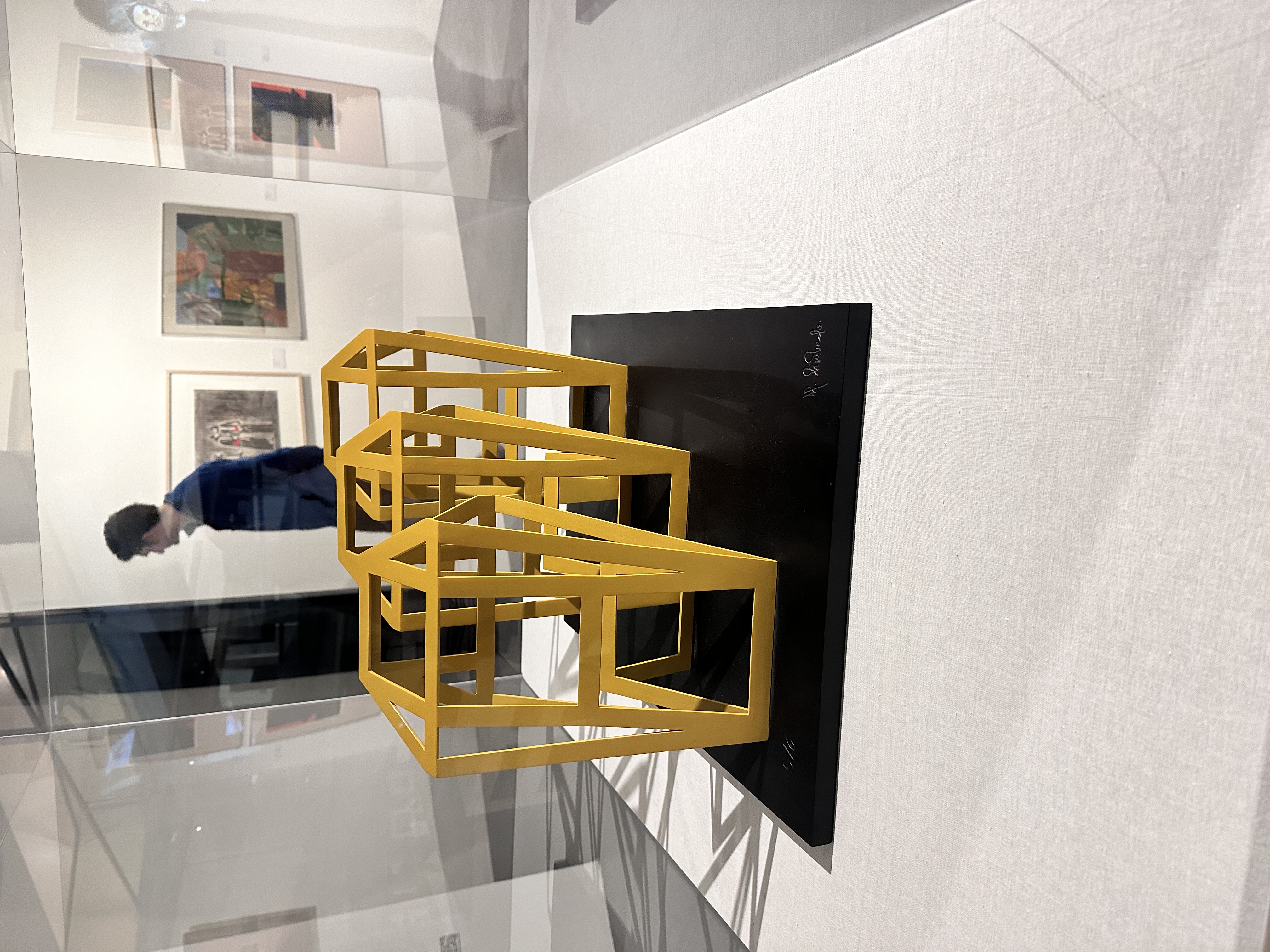
The second floor was themed around feminist activism. In addition to painting there were photos, newspaper clipping, and interpretive yarn pieces. One painting had Frieda Kahlo’s name in a circle with the names of men surrounding her with arrows from the men’s name pointing to Frieda’s name like this:
TODO: draw this image.
I get that this piece has meaning from its context and the social climate of it’s age and that it’s a powerful form of feminism, on the other hand … I thought about how you could sort of tell how old a statue was at the archeological museum by the craftsmanship of the sculpting. If this art piece was dug up I’m not sure if you’d be able to tell it was from 2023 from the craftsmanship alone.
Fancy Lunch
We decided to have lunch/brunch at a fancy looking place on the outskirts of the Plaza Jacinto, called Saks. Elizabeth said it looked like the fancy hotel she remembered from Moscow with the gold painted walls, the attentive staff, and the ornate railings. It was two floors. We sat on the second floor and everyone else in our room was dressed better than us.
They brought out a selection of fresh pastries for us to pick from. I got a sort of corn cake. Then we had a course of fruit. I got enchiladas stuffed with beans. All the food was great.
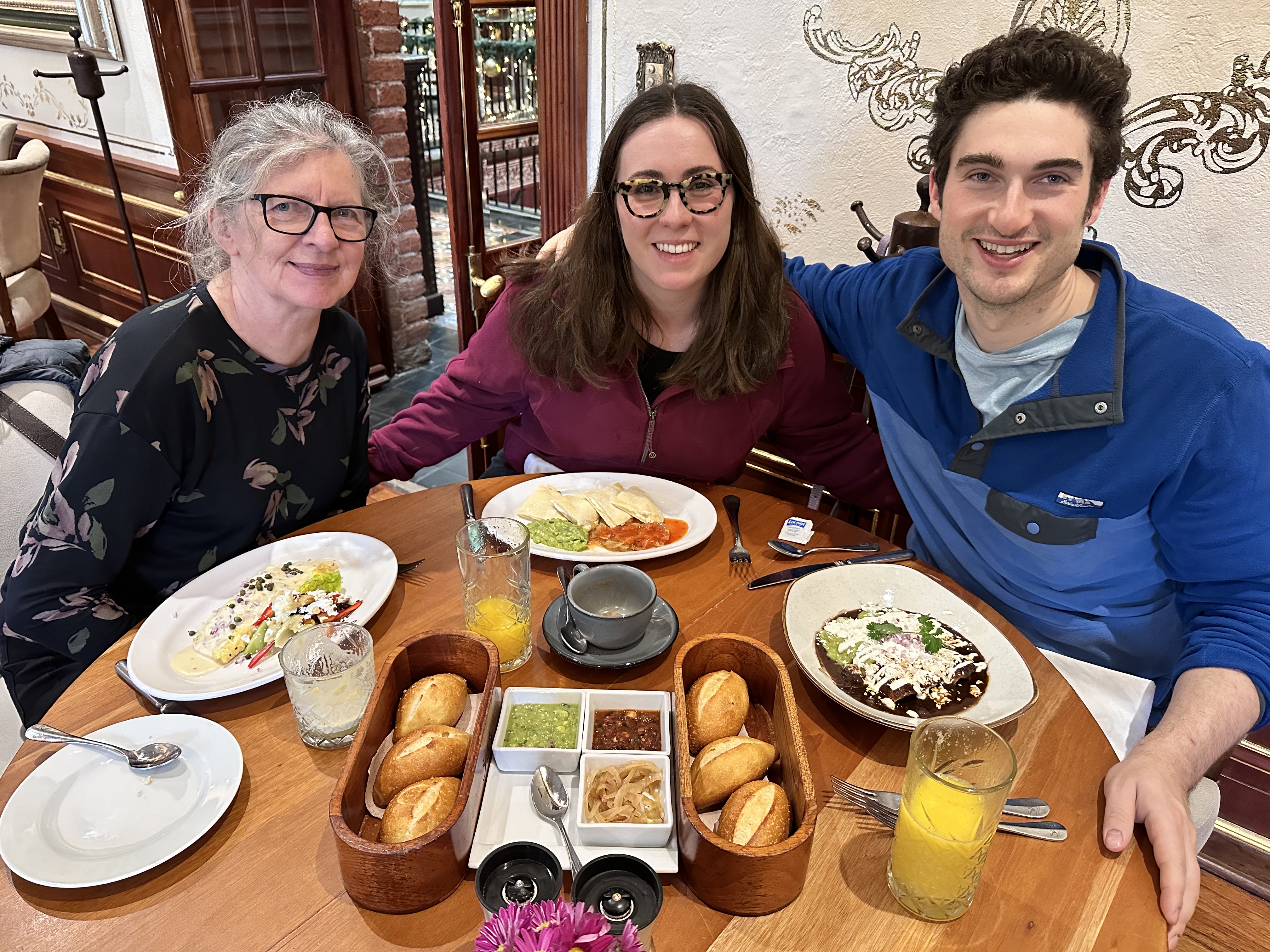
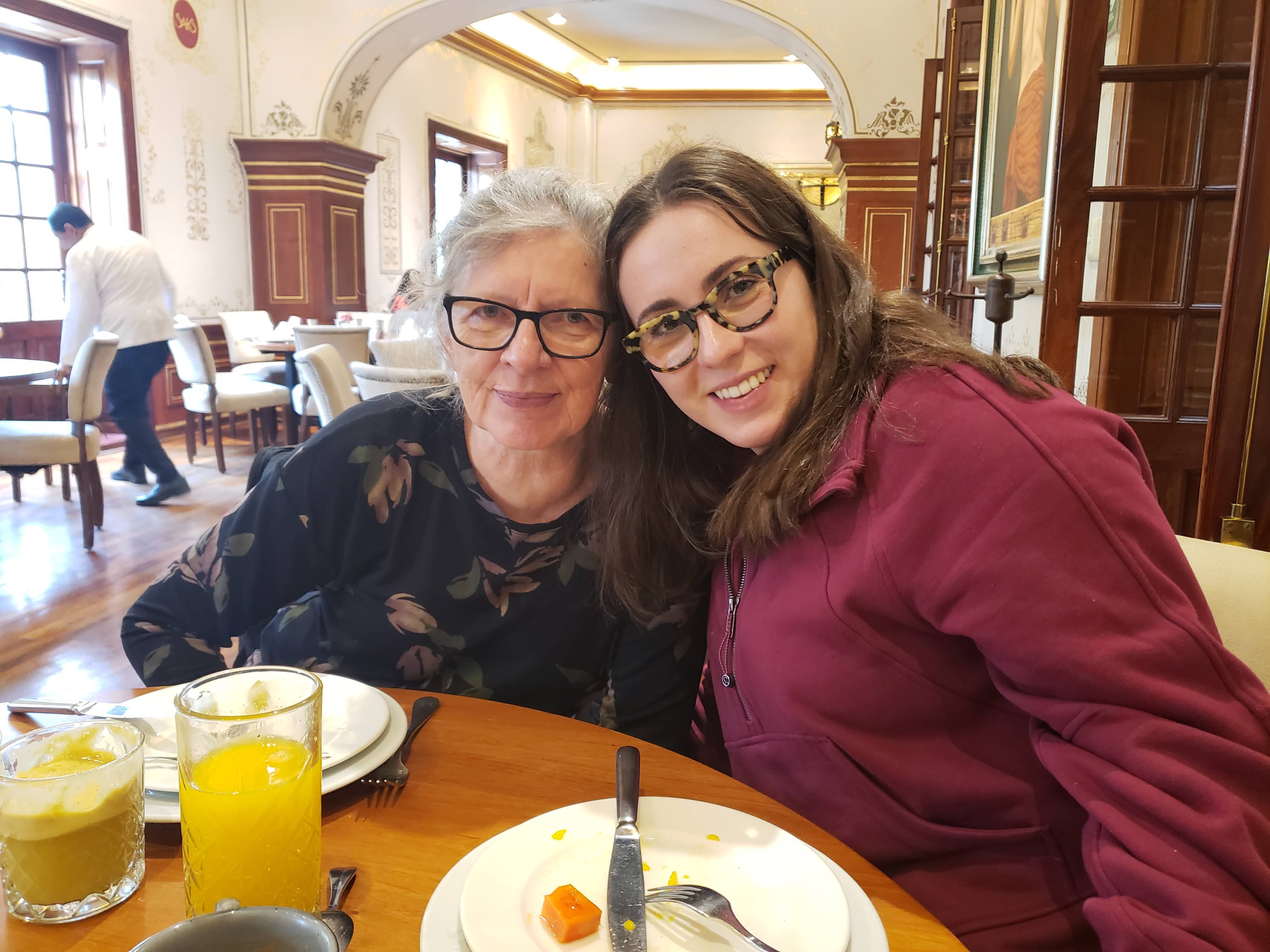
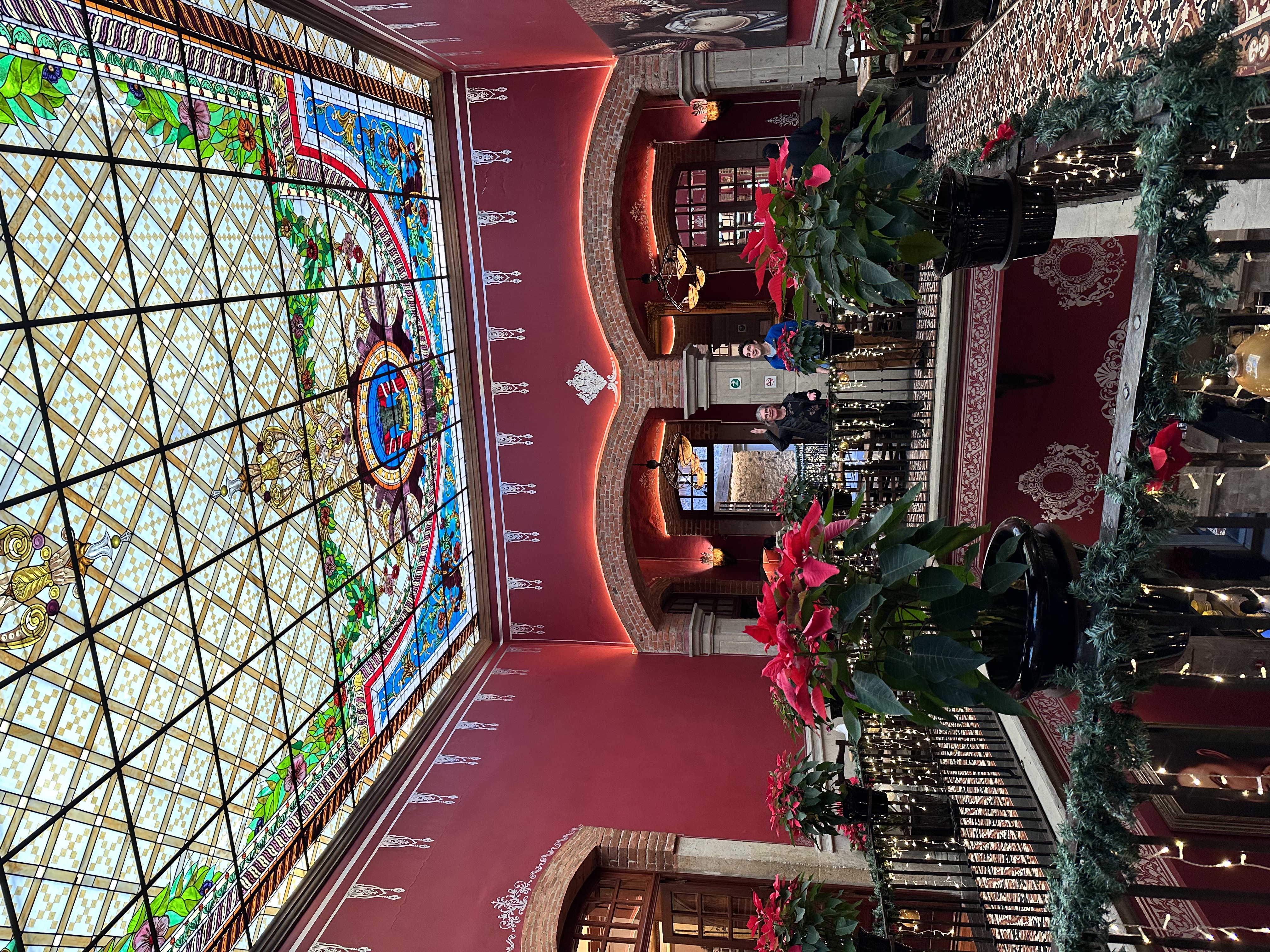
Free Museum
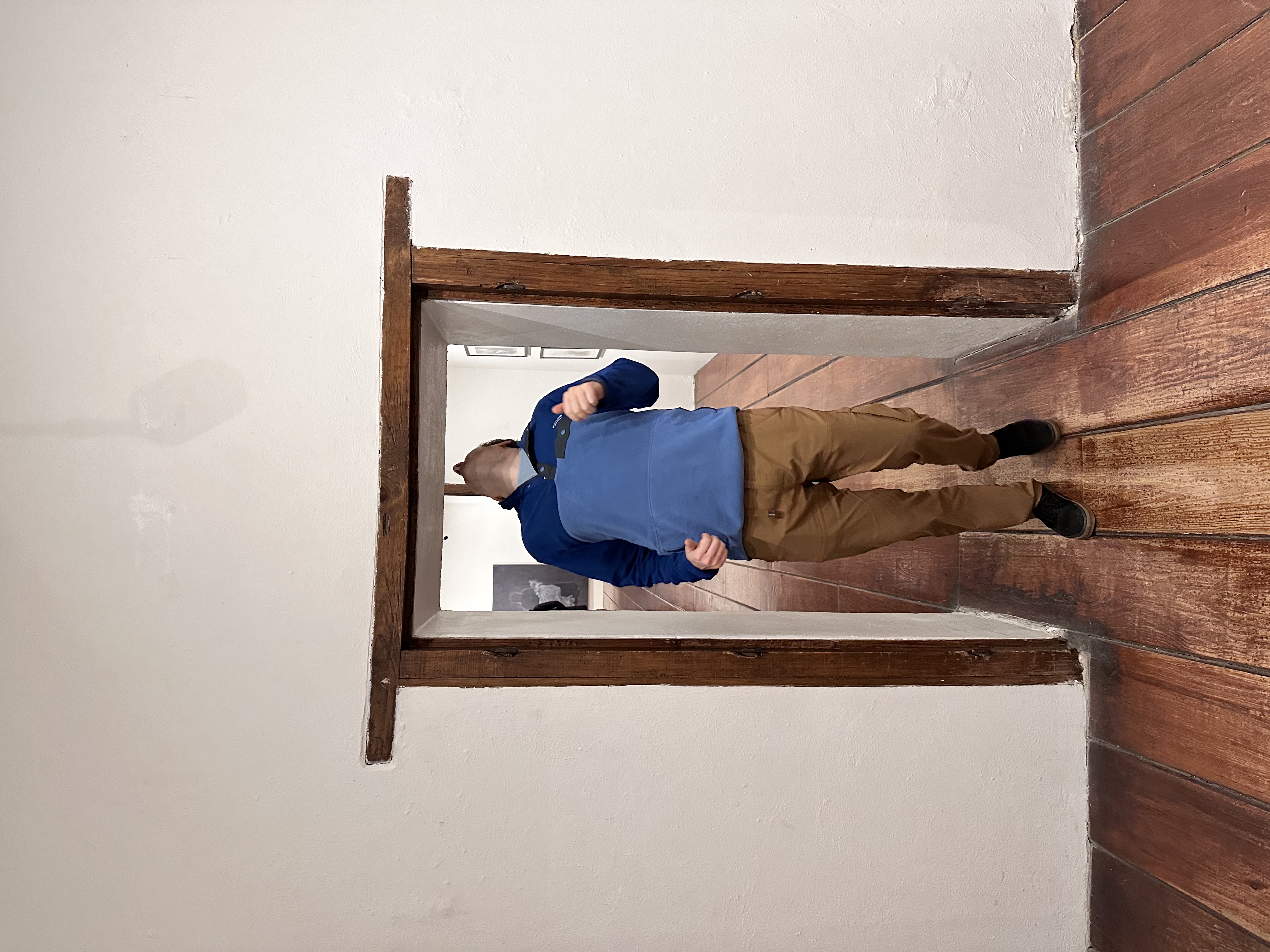
After lunch, we went to a free museum next door to the restaurant. It had been converted to a museum from a large mansion, originally owned by a wealthy family at the turn of the century. It contained a collection of baroque era paintings and furniture from the its period of being a house. It even had some family portraits of the original owners. They seemed unhappy in the photos, but I think that was the style at the time and not an indication that they were unhappy people. In the open courtyard there was a big terracotta statue. Elizabeth said it was the best work of art she had seen in Mexico City so far.
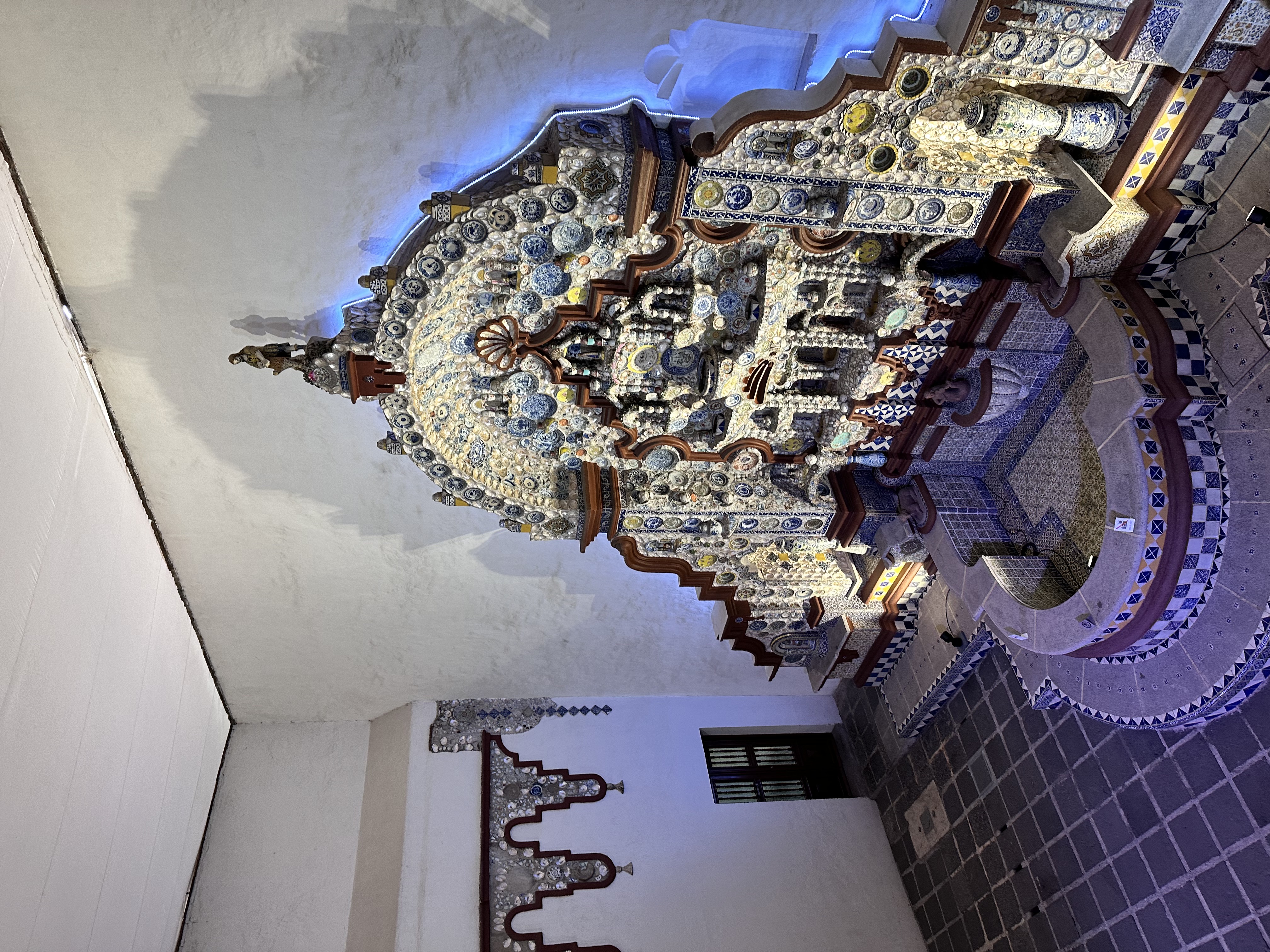
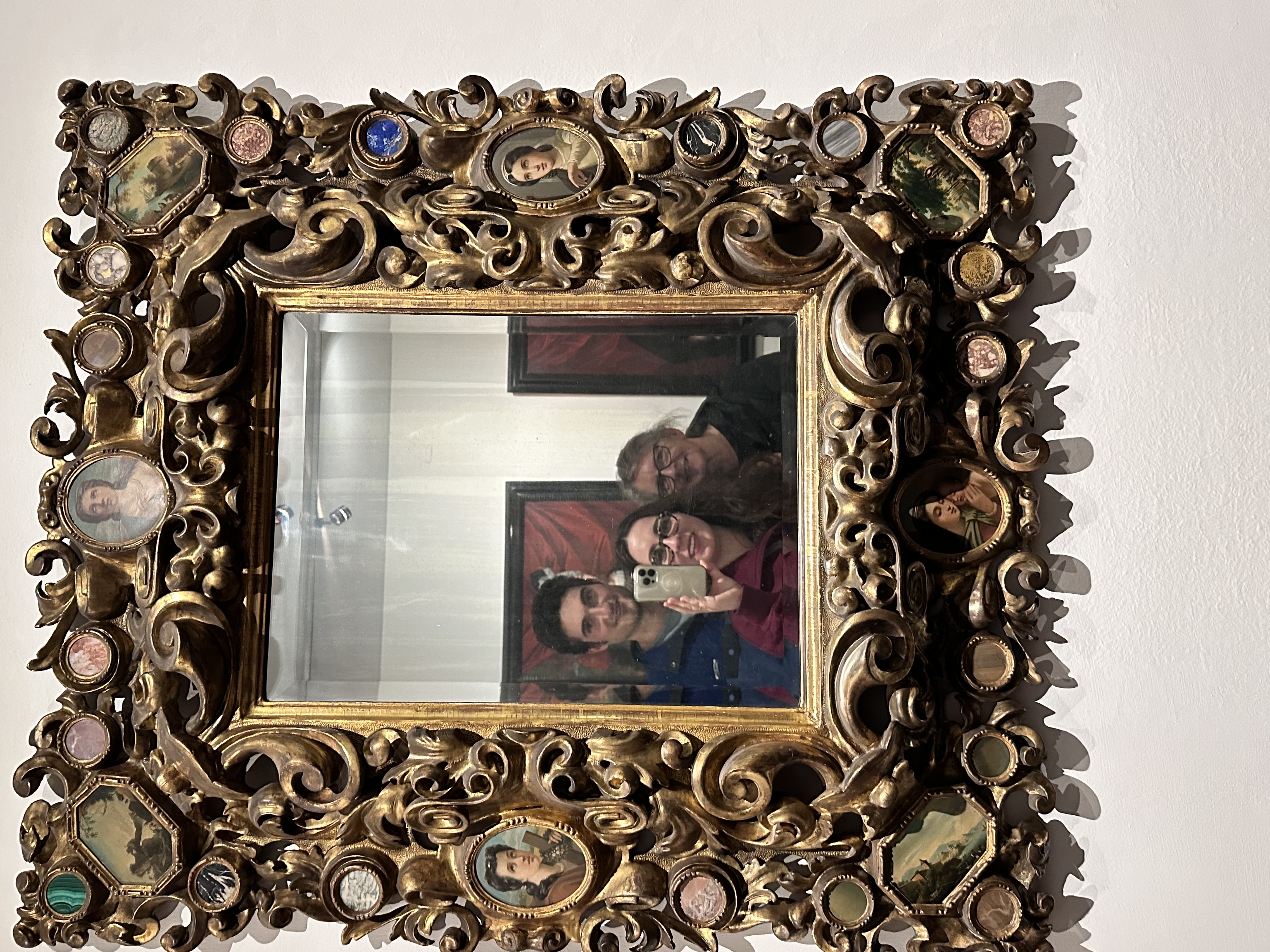
Retired Nuns
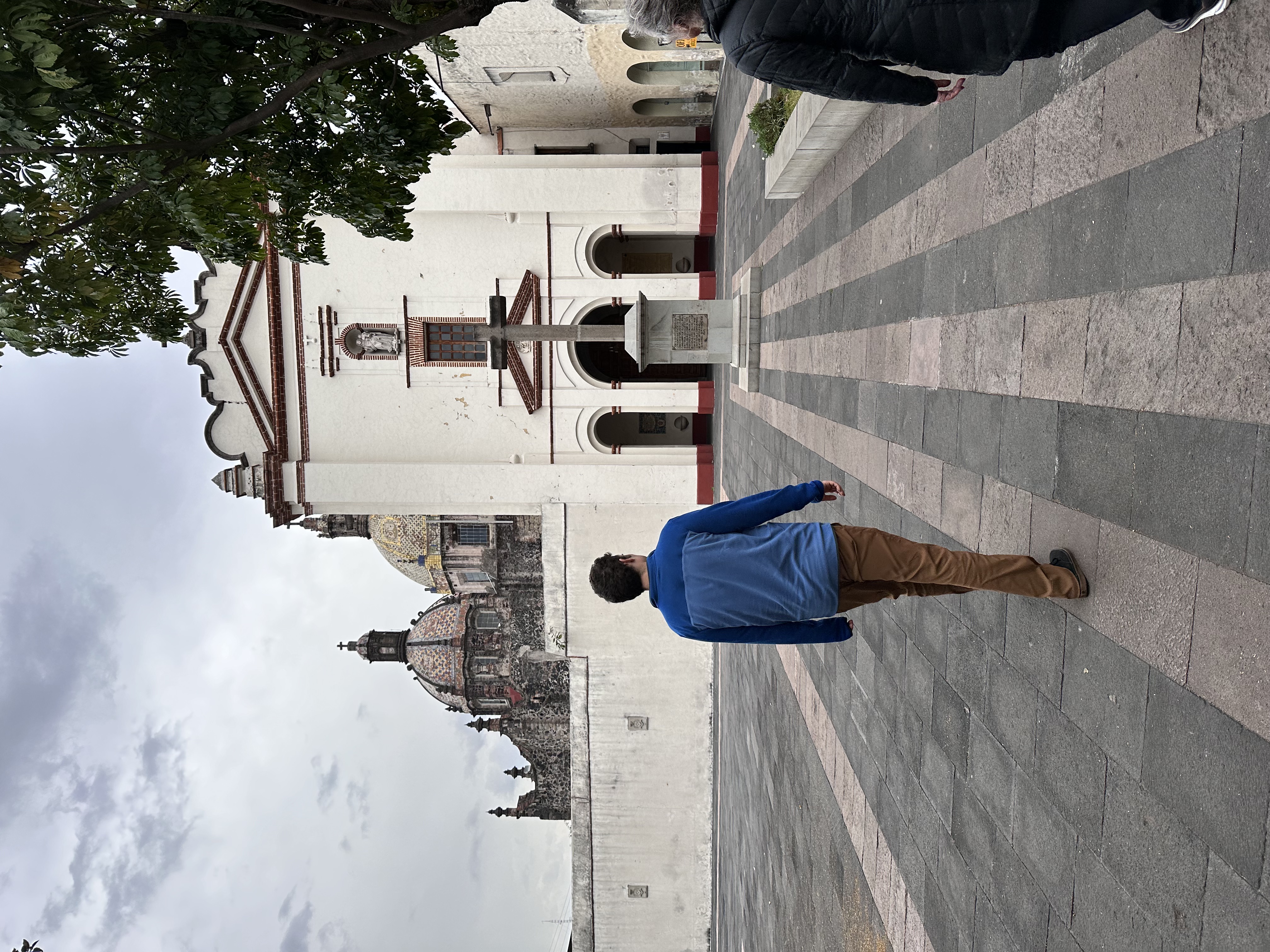
We started retracing our steps back to the car, but stopped off at the Museo de Carmel. It was originally a Carmallita convent. The Carmallitas are a group within Catholicism.
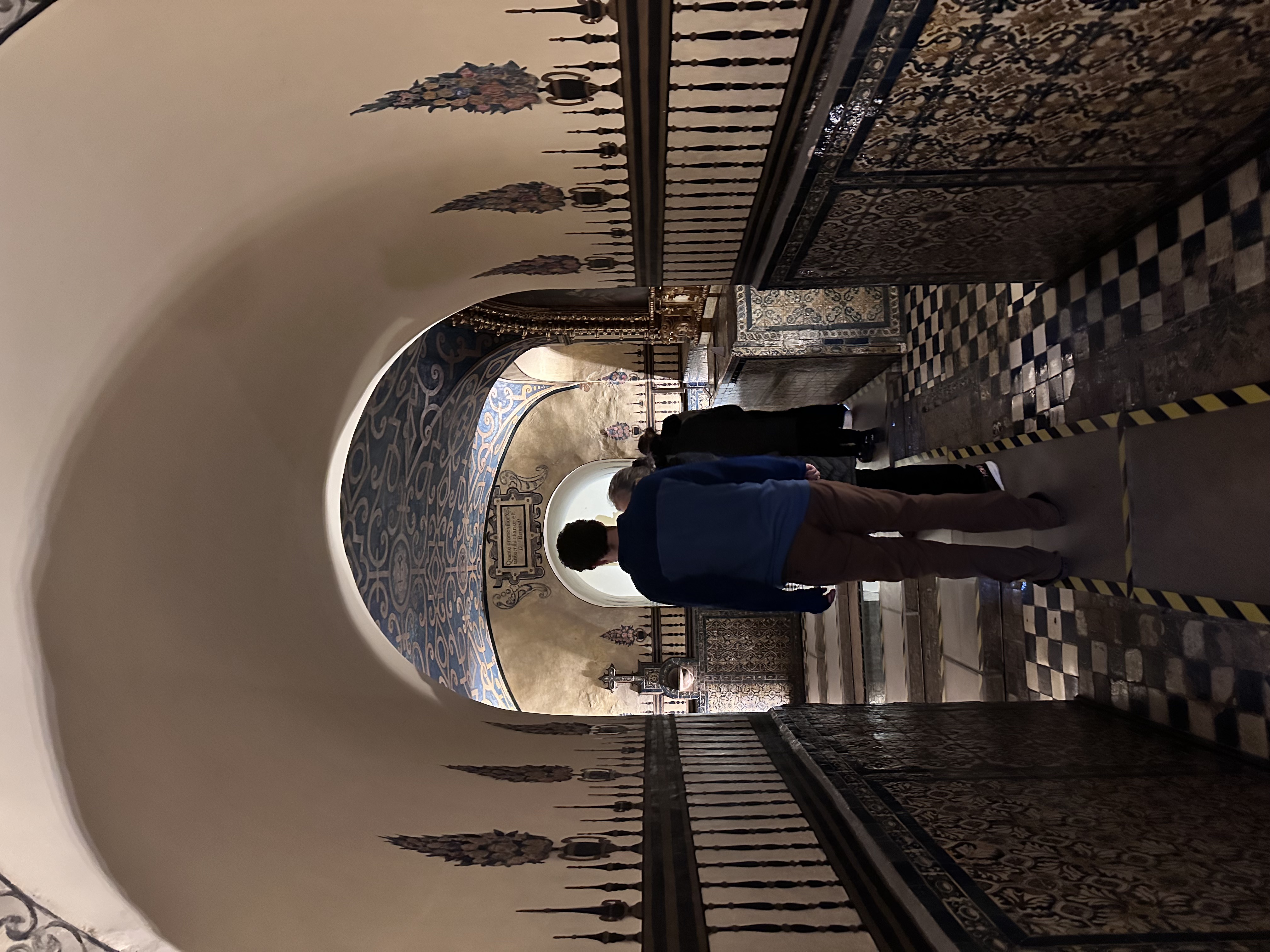
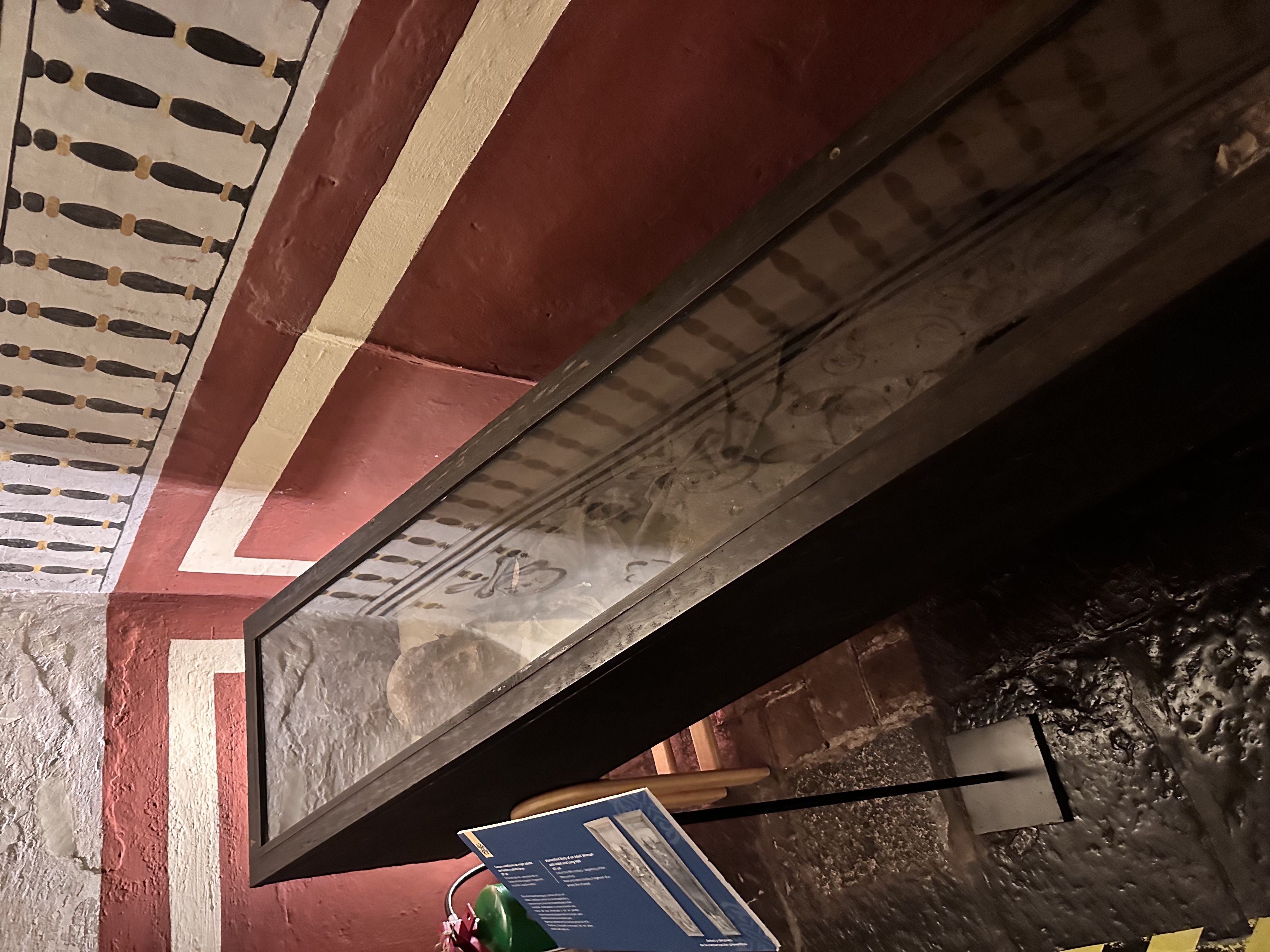
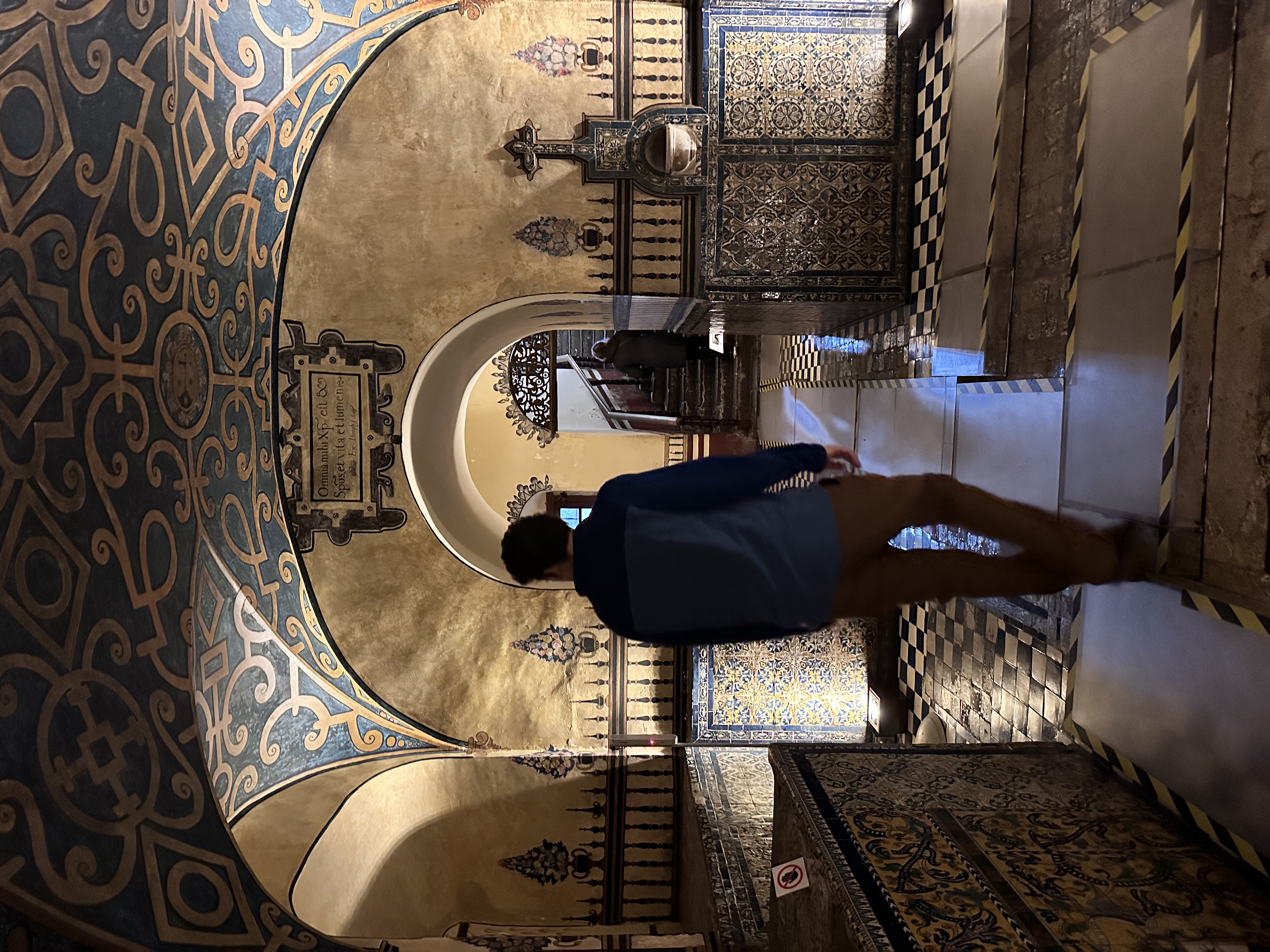
In the basement there was a crypt where on could see corpses from the late 1800’s. It had a creepy vibe. I wondered if the nuns had agreed to have their bodies put on display. Upstairs there religious paintings, among the old living quarters of the nunnery. My favorite piece was a representation of the story of Adam and Eve.
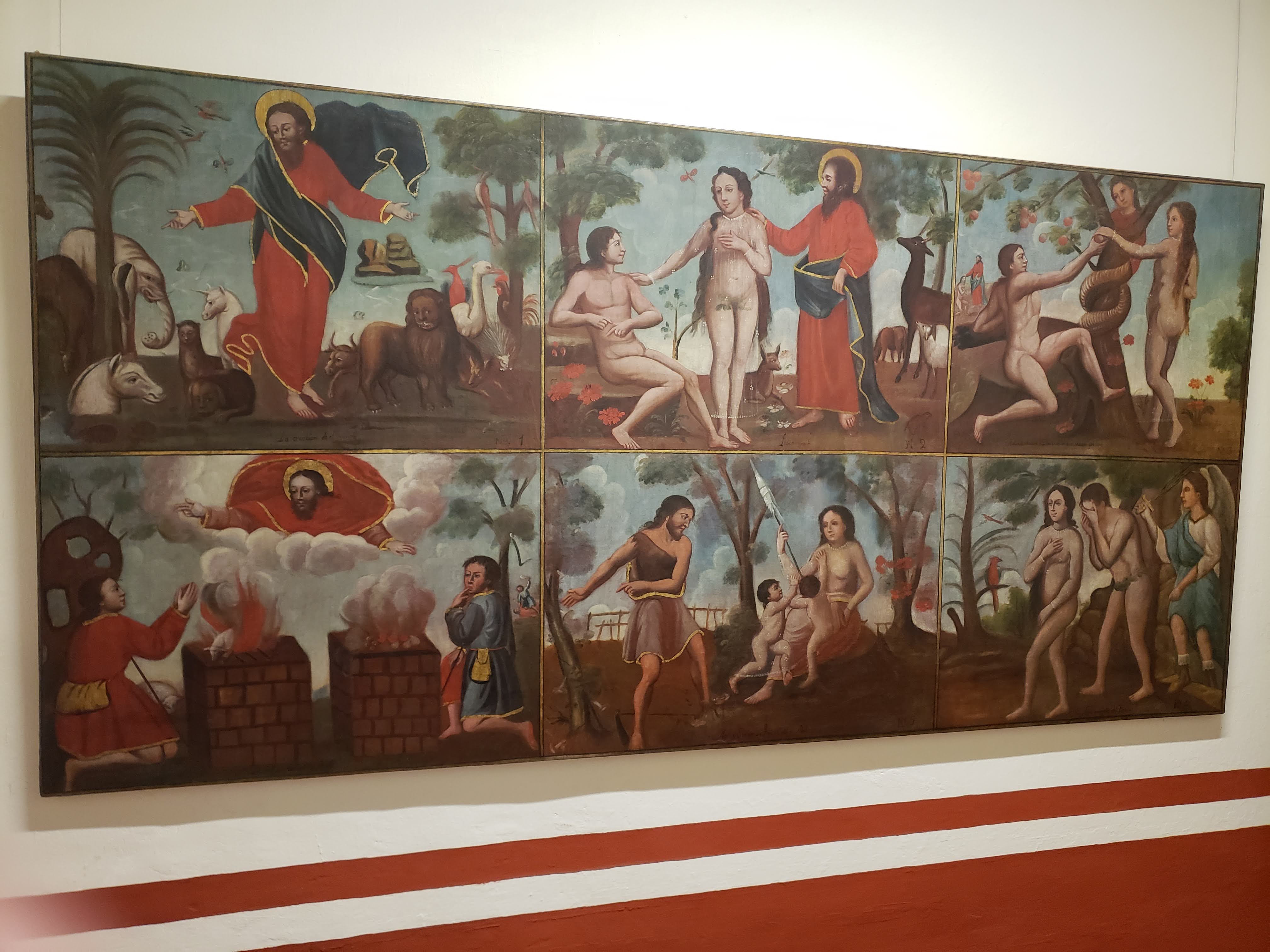
Costco
On the way back to the condo we went to Costco. Lizy was very excited to scope it out, so she could relay her findings to our friend Rachel. I was surprised how similar it was to our Costco in Mountain View, California. It was the same cans of Kirkland tuna, the same Dyson vacuum, and the same Costco signs. Lizy bought some funky cheeses. I’ll try to get her to insert her opinion of the Costco here later.
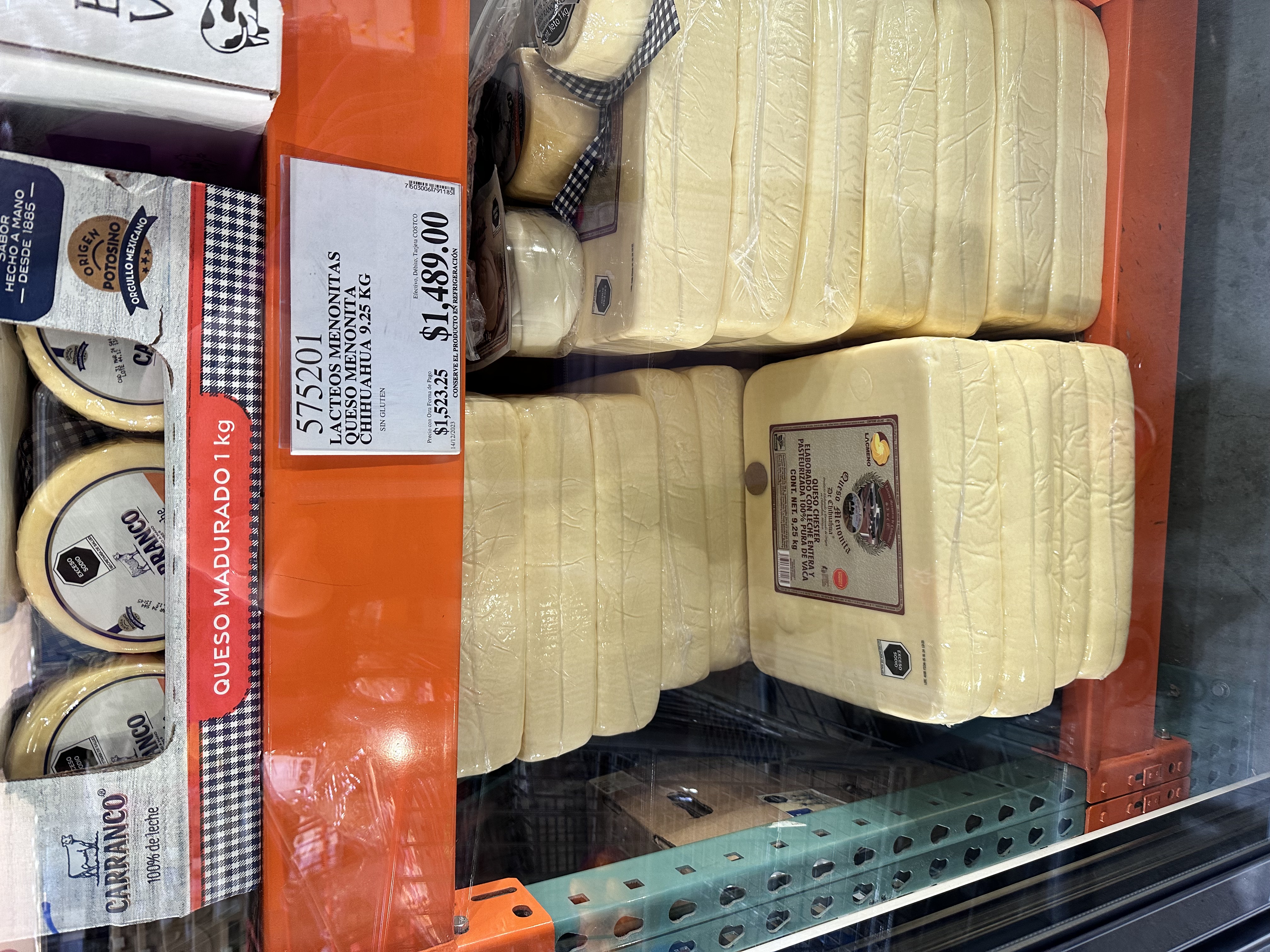
Dinner
Back a the condo I made a lentil soup for dinner. I cut some slices of avocado to put on top. I enjoyed it thoroughly.